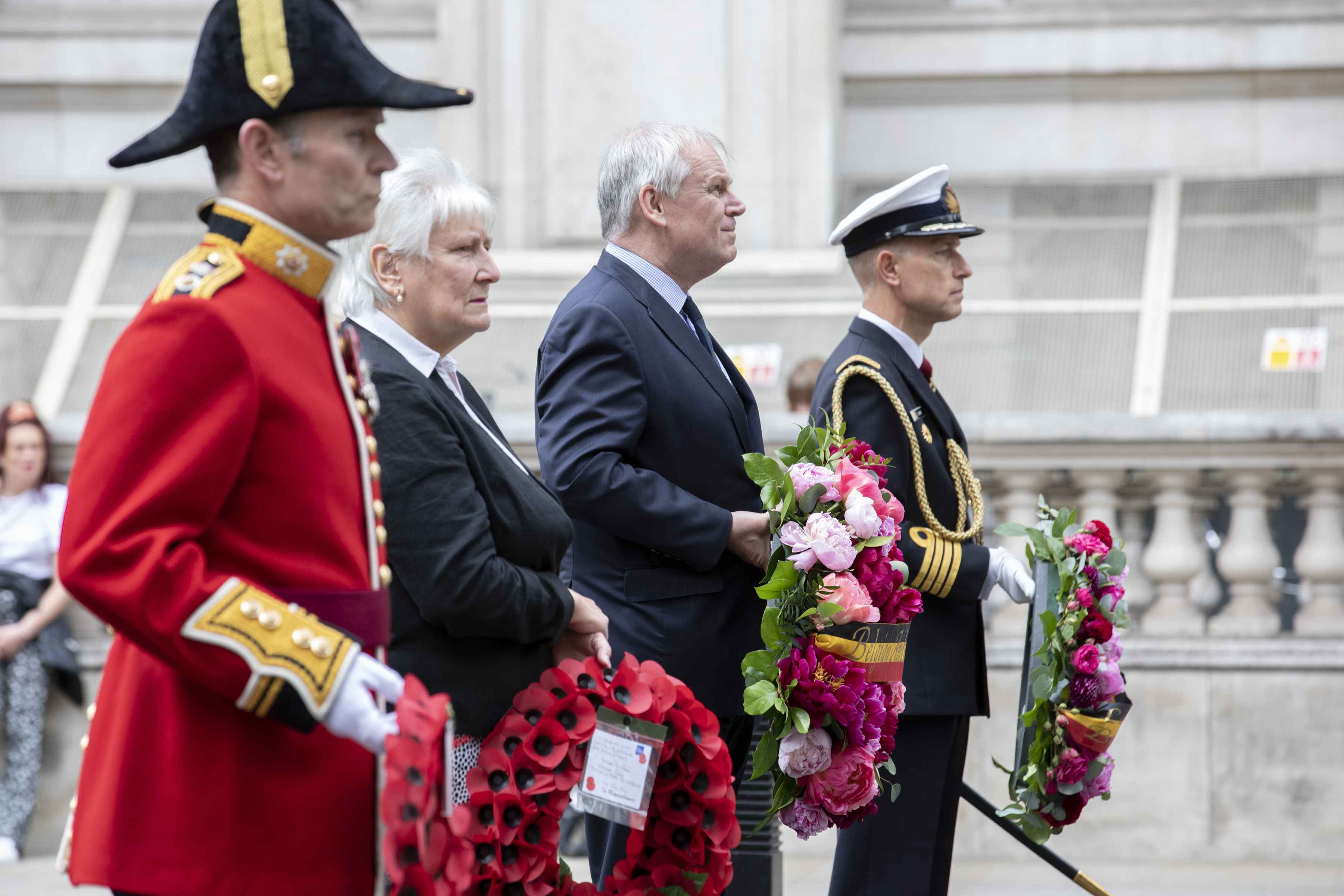The Belgian Cenotaph Parade to honour their nation’s dead has taken place annually in London since 1934 on the Saturday preceding Belgian National Day. This year is no exception though the colourful ceremony has been much curtailed due to ongoing COVID-19 restrictions on social gatherings and distancing.
The Belgian Parade was born from the friendship between the British King George V and the Belgian King Albert I but more importantly is a symbol of the fraternity that existed between the British and Belgian soldiers during and after both world wars, and confirms the close ties that continue to unite both countries today. At the service tribute is paid to all those who made the ultimate sacrifice for our freedoms from both sides of the Channel.
On February 17th 1934, King Albert of the Belgians, who was also Colonel-in-Chief of the ‘5th Inniskilling Dragoon Guards’, died in a climbing accident. Touched by the death of his cousin and, in recognition of the heroism and sacrifice of the Belgian Army in the First World War, King George V decided to bestow a unique honour on the Belgians never awarded to any other non-Commonwealth nation: a yearly Belgian Parade at the Cenotaph in London’s Whitehall.
This iconic monument for the dead, built from 1919 to 1920 at the request of the then prime minister, David Lloyd George, is a sombre hub at the centre of the political buildings of Whitehall, and dedicated to all those who died from Britain, the Empire and Commonwealth. Belgium remains the only non-Commonwealth nation that is allowed to parade its troops in uniform, bearing arms, in central London.
The unique ceremony, which this year had musical accompaniment from the Band of the Scots Guards, was significantly reduced in size due to COVID restrictions but held with due reverence and ceremony nonetheless. It was attended by His Excellency the Belgian Ambassador to London, Mr. Bruno van der Pluijm, and Belgian military representative, Captain Renaud Flamant, Baroness Goldie, represented the UK Government and the British military were represented by Major General Duncan Capps, Commandant, the Royal Military Academy Sandhurst. Each laid a wreath at the Cenotaph and the last post was played.



